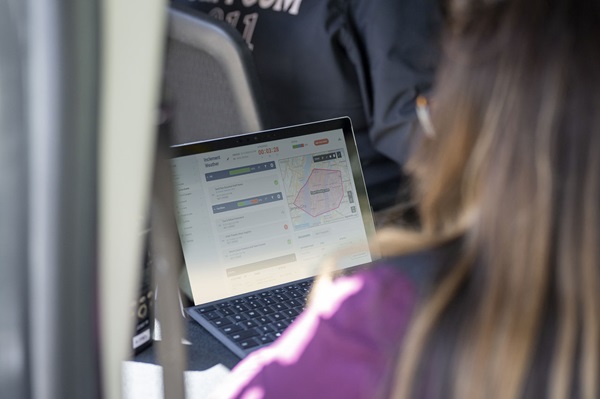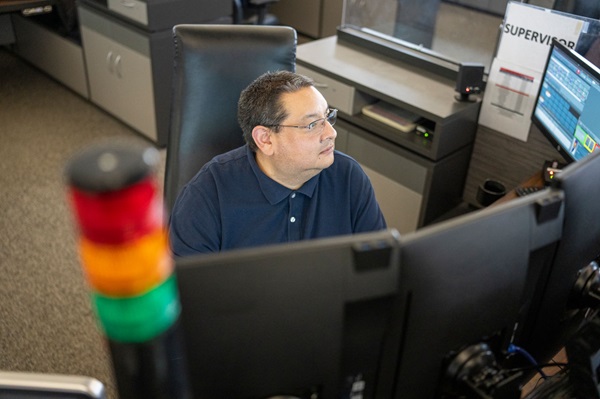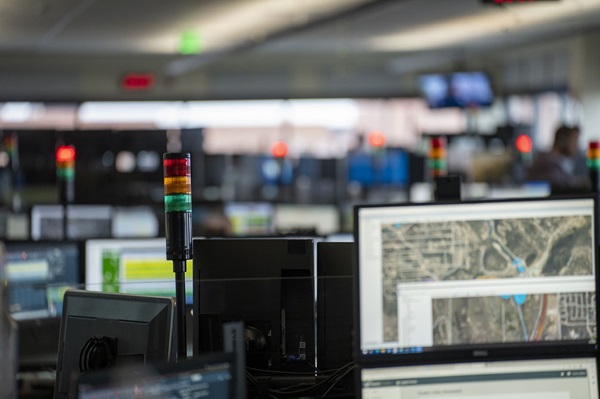Keeping employees safe before, during, and after emergency events is the responsibility of each employer. Under the General Duty Clause of the Occupational Safety and Health Act of 1970, each employer must “furnish to each of his employees employment and a place of employment which are free from recognized hazards that are causing or are likely to cause death or serious physical harm to his employees.”
Per the Occupational Safety and Health Administration (OSHA), employers are also required to do everything in their power to keep their employees safe while traveling a certain distance from the business.
Companies must prepare an Emergency Action Plan (EAP) to inform employees and assemble necessary personnel in an emergency, which includes safety instructions for both employees on-site and traveling.
Therefore, safety preparation is critical for keeping employees safe. Organizations cannot always predict when injuries, accidents, illnesses, severe weather or other emergencies, but a workplace safety policy can reduce their severity and even create better outcomes.
Where Workplace Safety Policies are Needed
Workplace safety policies are the set of rules and procedures that inform employees of how to stay safe in their working environment. These policies exist to prevent accidents, and while many of them are generally established principles and guidelines, they are often more complex than they seem.
There are also specific plans of action and a list of tools needed to make them happen, such as a safety checklist, an emergency alert system and safety training.
These guidelines set clear expectations and can prevent chaos when emergency and non-emergency situations arise. Employees can fully understand what is expected of them, while emergency managers know how to appropriately delegate tasks and contact individuals.
There are five standard workplace safety policies that businesses and organizations should implement.
Safety Statements
The first step in establishing a safer workplace is to involve every employee in workplace safety. Creating and distributing official statements of your company’s workplace safety policy reinforces core values and guides employees in safely executing their job functions.
Safety Guidelines
Safety statements should also include specific guidelines for helping employees understand what is expected of them and how you as an employer will deliver your duty of care. However, the exact outline will depend on your line of business.
Examples include policies and procedures for reporting hazards, providing accessible emergency exits and equipment, prohibiting employees from completing their job duties while under the influence, offering regular breaks and more.
Guidelines for Reporting
OSHA mandates that employers follow specific guidelines to report fatalities and severe injuries.
Having clear reporting procedures helps employees and their employers act decisively in a matter of seconds, minimizing further injury and harm. Such a report would include specifics on how to report incidents, which types of incidents should be reported, who to report them to and how quickly this needs to get done.
Safety Procedure Checklists
A checklist can help employees be certain of what it takes to execute workplace safety policies. A simple checklist for more common procedures can be displayed by time clocks and in break rooms.
Safety Protocols for your Business or Industry
Every business will need its own safety plan that caters to the company’s specific needs. Employers should conduct risk assessments to identify common safety hazards and gaps in pre-existing policies. Get a good start by revisiting old records, past OSHA violations, worker’s compensation claims or any reported injuries.
Examples of this can include safety rules for construction sites, health screening for COVID-19 and other illnesses or protection against severe weather elements.
Severe Weather Workplace Safety Policies
Severe weather can strike at a moment’s notice. In 2021 alone, there were a record-breaking 20 severe weather and natural disaster events, including wildfires, drought, tornadoes, severe thunderstorms, hurricanes and tropical cyclones.
As the number of severe weather events and natural disasters in the U.S. increases, employers must inform and protect their employees as early as possible. Maintaining communication amid dangerous weather conditions prevents panic, confusion, fear and injuries.
Natural disasters are not the only safety hazard employers face. Companies should prepare for mental health crises, fires, chemical exposures, and other common disasters.
Employees will need to know what action steps to take, so having a system that keeps everyone connected is crucial. Employers can be held liable if a victim or their family can prove negligence. OSHA penalties start at $14,502 per violation and may increase upwards of $145,027 for willful or repeated violations.
Failure to comply with these safety standards could cause a higher level of liability and lawsuits and could possibly earn your business a spot on the National Council for Occupational Safety and Health (National COSH) “Dirty Dozen” list.
Safety policies for mental health & workplace violence
Emergency communication is not just necessary for natural disasters and severe weather situations. A mass communications system can keep employees safe in the event of an active shooter, a mental health crisis, or customer or employee violence.
Unfortunately, these events seem to be on the rise. According to the Bureau of Labor Statistics Census of Fatal Occupational Injuries (CFOI), there were 761 cases of intentional injury by another person that led to death in 2019. While it’s unknown how many people have been affected by active shootings in and near their workplace, an average of 51 people died from mass shootings per year from 2014 to 2019. Cases of anxiety and depression are also on the rise after the COVID-19 pandemic began, leading to more and more concerns about mental health in the workplace.
In this environment, it’s easy to see why a corporation or employer would want to increase safety measures on their premises.
Through confidential two-way messaging and emergency buttons, key stakeholders can instantly connect to 9-1-1 and emergency responders — a tool especially useful in office buildings, schools, universities, and government buildings.
A comprehensive system would involve all key stakeholders and responding personnel to address situations like these as they unfold, allowing them the resources needed to reduce response time and improve response accuracy, improving the safety of all those affected.
Creating Workplace Safety Communication Plans
No workplace safety policy is complete without a critical communications system. They can help employers address emergencies with just a few simple clicks. When time is critical, a platform like this can ensure your team receives import updates through accessible channels.
The issue with traditional methods of emergency communication — intercoms, public address systems, email, social media, and instant messaging — is that it may not reach everyone. If employees are not present in their place of work to hear announcements, they may miss what is happening. Likewise, employees with silenced notifications may miss electronic alerts.
During natural disasters, server and network outages may happen, cutting off company operations and email. Although phone and call trees are low-cost, they are inefficient ways to communicate important information.
Employees must find a better solution for reaching all faculty and staff, whether on-site or off.
Timely warnings protect all personnel
A mass notification system that caters to the specific communication needs of each employee helps mitigate gaps in communication and emergency preparedness. A system that allows employers and their employees to communicate with each other before disaster strikes or in the seconds following ensures everyone’s safety and security.
This type of system would allow crisis managers or leadership to send out notifications to all employees, regardless of their location. Emergency notifications can be sent via text, email, voice call, desktop alerts, sirens, and digital signage, all at the same time.
With it, crisis managers can communicate during events and discuss the next steps before they occur.
A mass notification system would also allow administrators to set role-based access control to send targeted messaging, avoiding confusion and minimizing panic. They can also create preset templates that include important information on the type of emergency, the date, location, and necessary action steps.
How the Rave Mobile Safety Suite Can Help
K-12 Schools
Protect all faculty, staff, and students with on-site coordination through a panic button app that connects staff to 9-1-1 and coordinates the next steps.
Hospitals
Give healthcare staff a lifeline to connect anywhere they are located with vital information, two-way communication, and targeted alerts.
State or local community
Integrated communication with data and response capabilities provides a safer community.
Corporate
Prepare for emergencies and delegate the next steps for both the expected and unexpected by providing vital information when seconds count.
Higher Education
Prepare your faculty to be empowered about their safety and security should an emergency event occur.
Keep Employees Safe When Seconds Count
It is difficult to predict any form of emergency, but being armed with preset alert templates and a plan of action can prepare your business for emergencies. A mass notification system enables key stakeholders to quickly and efficiently alert employees of current events.
With a comprehensive communications tool, emergency managers, 9-1-1 teams, first responders, local government officials, human resources personnel, campus safety officials and residents can be prepared before and informed during emergencies. A service such as this can ensure clear and effective communication and a real-time understanding of what’s happening.
To learn how you can strengthen your organization’s workplace safety policies through the Rave Mobile Safety Suite, do not hesitate to request a demo.





Comments are closed here.